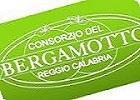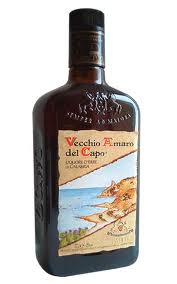 Amaro del Capo : A symbolic product of Distilleria Caffo is Vecchio Amaro del Capo, a Calabrese, herb based liqueur, the fruit of an ancient, Calabrese recipe further processed and improved with experience acquired over four generations of the Caffo family.
Amaro del Capo : A symbolic product of Distilleria Caffo is Vecchio Amaro del Capo, a Calabrese, herb based liqueur, the fruit of an ancient, Calabrese recipe further processed and improved with experience acquired over four generations of the Caffo family.
Vecchio Amaro del Capo encloses the active principles of plenty of beneficial herbs, flowers, fruit and roots from the generous land in Calabria, infused in the finest alcohol, to aid digestion and give a feeling of wellbeing.
Among the 29 medicinal herbs composing the infusions, we recall some of the most widespread in Calabria, due to their tonic-digestive properties, such as bitter orange, sweet orange, liquorice, mandarin, camomile and juniper.
Its delicate and aromatic taste also adapts well to more delicate palates, not used to "Bitter drinks". The best Calabrese tradition says, they should be drank frozen (at –20° C in small, characteristic "Capo” glasses) to emphasise the characteristics of the particular herbs composing them.
Today, Vecchio Amaro del Capo is among the most widespread sold in Italy and boasts the fact it was the first bitter beverage to be proposed frozen in the slogans launched by the company way back in the Seventies when consumption was mainly in the summer and it was only distributed in Calabria. In 2010 Vecchio Amaro del Capo was the only Italian bitter beverage to be awarded the gold medal in a worldwide competition in Brussels.
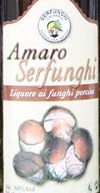 Amaro Serfunghi. Another amaro (bitter) who is fast winning over the taste of many new fans is the Amaro Serfunghi, a relatively new product from Calabria, offered by Serfunghi , Serra San Bruno .
Amaro Serfunghi. Another amaro (bitter) who is fast winning over the taste of many new fans is the Amaro Serfunghi, a relatively new product from Calabria, offered by Serfunghi , Serra San Bruno .
An herbal digestive liqueur with the addition of dried porcini mushrooms that give a dense perfume ... excellent as a digestive and kitchen.
Calabrian liquorice : Known in the European and Asian worlds since the time of ancient civilizations of Mesopotamia, is a plant of the 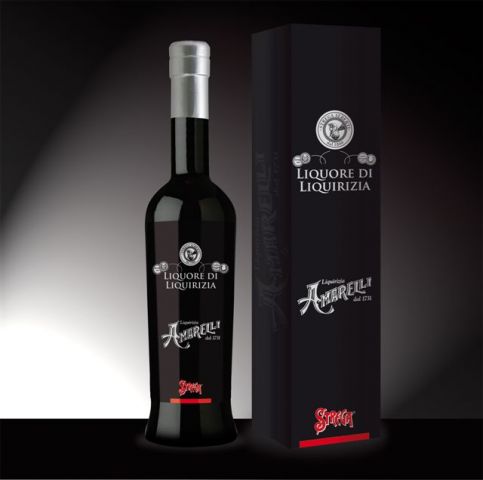 herbaceous perennial family that take on the scientific name Glycyrrhiza from Greek “sweet root”.
herbaceous perennial family that take on the scientific name Glycyrrhiza from Greek “sweet root”.
Many different species are known but those commercially utilized are essentially three: glabra, echinata and uralensis, each with it’s aerial within a region that spreads from Spain to China.
In the province of Cosenza, these vegetate spontaneously, (for this reason the root has a higher yield, diversely from others, instead, for which the cultivation is attempted), in the lower part of the basin of the Crati and extends towards the Ionia, and is greater taken care of in the Corigliano region.
The liquorice root (the underground part of the plant) is subject to a real utilisation. It is very much utilized, other than the transformation into juice, also in cosmetics, in the herbal field and to produce distilled products.
Lemon fizzy drink : From an ancient Calabrian recipe, prepared just with water, sugar, lemon concentrate and carbon dioxide.
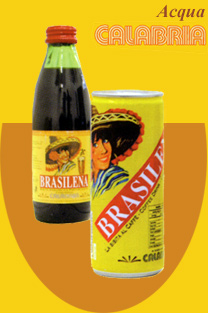 Brasilena : Coffee-flavoured fizzy drink. Very refreshing and mainly drunk in summertime.
Brasilena : Coffee-flavoured fizzy drink. Very refreshing and mainly drunk in summertime.
It's a fizzy soft drink type of coffee produced and marketed by the bottling Calabria Acqua in Monte Covello in Girifalco in the province of Catanzaro for more then half a century.With ever increasing demands for its unique taste and the perfect amount of coffee used, can also be drunk by youngsters.
It is also characterized by the fact that the only formats used are: glass bottles of 18, 25 and 100 cl aluminum cans of 25 cl slim.
There are many similar drinks , such as : "Bibicaffè" produced in Lamezia Terme since 1904, Moka Drink produced by 'SilaDrink' and "Coffee Siesta" by Azzurrina.
The above drink is available in Canada .Contact Made in South Italy Today.
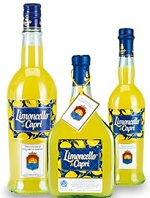 Limoncello ( Lemon Liquor) : Lemon is indigenous to the Far East (China and India). The first description of the employment of this fruit for therapeutic purposes dates back to Theofrastus, a follower of Aristotle. Only in recent times (18th century), lemon began to be employed also in cooking.
Limoncello ( Lemon Liquor) : Lemon is indigenous to the Far East (China and India). The first description of the employment of this fruit for therapeutic purposes dates back to Theofrastus, a follower of Aristotle. Only in recent times (18th century), lemon began to be employed also in cooking.
Limoncello is a liquor whose tradition was learnt from the Arabs around the year 100 and still today in every family it is prepared according to the same tradition, using lemon and orange rinds, widely spread in the whole region, with the addition of distillates and sweeteners.
It is obtained from the alcoholic infusion of lemon rinds. It can be used as a digestive liqueur, diluted in water to create drinks, for ice-creams, sorbets, and in the preparation of some sweets.
The ingredients are very simple: alcohol, alcoholic infusion of flavours, lemon rinds and sugar. In order to better taste its fragrance, you had better slightly cool.
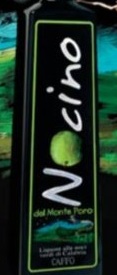 Nocino ( nut liquor) : Walnut-trees have always boasted a pagan sacredness, that they were already recognized by the Greeks and the Romans. It was often connected with esoteric rites of witches who gathered under the branches of those trees to celebrate demoniac sabbas.
Nocino ( nut liquor) : Walnut-trees have always boasted a pagan sacredness, that they were already recognized by the Greeks and the Romans. It was often connected with esoteric rites of witches who gathered under the branches of those trees to celebrate demoniac sabbas.
Still today the tradition relates that green nuts are picked only during the night of June 23rd, the day on which in ancient times summer solstice was celebrated and still today recalled by the figure of St. John, the favourable day for the birth of alchemists.
Nocino is a product obtained using Calabrian green walnuts picked during the last week of the month of June, since their rind ids still tender. Here lies the secret of this liquor's fragrance, respecting the ancient traditional recipe which also includes the use of precious spices and a long period of aging of the alcoholic infusion.
Nocino is obtained through alcoholic about 40-day maceration of green-hulled nuts. In this way it reaches an alcoholic strength around 40° after the addition of sugary syrup. This liquor boasts a high digestive power, that is why we suggest that it is served after meals, so as to appreciate its particular characteristics.
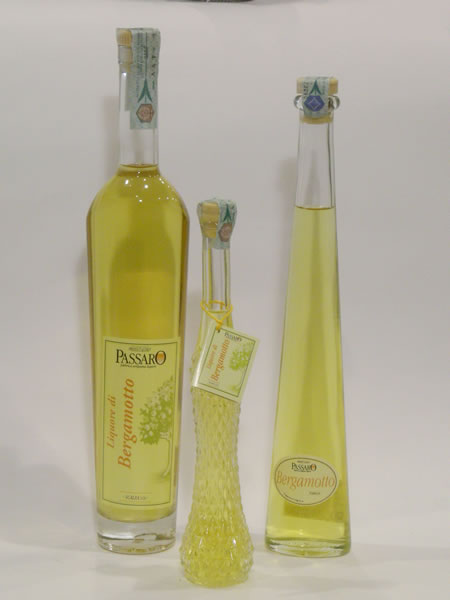 The Bergamotto : The name Bergamotto derives from the Turkish word "Beg-armudi", the lord's pear, for its similarity with the Bergamotto pear.
The Bergamotto : The name Bergamotto derives from the Turkish word "Beg-armudi", the lord's pear, for its similarity with the Bergamotto pear.
The origins of this citrus fruits is very uncertain: many declare that this fruit derives from the transformation of another type of citrus fruit; others retain that it was imported from the Canary Islands by Christopher Columbus; the ideal and exclusive habitat for its cultivation is the province of Reggio Calabria where the fruit grows and matures perfectly.
The first Bergamotto orchard was near the capital city of the Reggio Calabria region in 1750. The essence was manually peeled off and absorbed by natural sponges, position in specific reservoirs.
Production mostly is limited to the Ionian Sea coastal areas of the province of Reggio di Calabria in Italy, to such an extent that it is a symbol of the entire city. Most of the bergamot comes from a short stretch of land there where the temperature is favourable.
It is also cultivated in Ivory Coast, but the quality of the obtained essence is not comparable with the essence produced from the bergamots of Reggio due to the argillite, limestone and alluvial deposits found there.
The essential Bergamotto oil is a unique product for different functions: in perfumeries it is used in aromatic bouquets for perfumes and harmonizes the other essences, exalting a note of freshness and fragrance; it is also a fantastic ingredient in solar creams, even though it must be reminded that the essence must not be applied to the skin, on exposition to the sun; it is also used in the pharmaceutical industry for its antiseptic and antibacterial powers; and finally it is also used as to aromatize liquors, tea, caramel, sweets, ice cream and soft drinks....learn more about the benefits of the bergamot >>>


 Amaro del Capo :
Amaro del Capo : Amaro Serfunghi. Another amaro (bitter) who is fast winning over the taste of many new fans is the Amaro Serfunghi, a relatively new product from Calabria, offered by Serfunghi , Serra San Bruno .
Amaro Serfunghi. Another amaro (bitter) who is fast winning over the taste of many new fans is the Amaro Serfunghi, a relatively new product from Calabria, offered by Serfunghi , Serra San Bruno .
 Brasilena : Coffee-flavoured fizzy drink. Very refreshing and mainly drunk in summertime.
Brasilena : Coffee-flavoured fizzy drink. Very refreshing and mainly drunk in summertime. Limoncello ( Lemon Liquor) : Lemon is indigenous to the Far East (China and India). The first description of the employment of this fruit for therapeutic purposes dates back to Theofrastus, a follower of Aristotle. Only in recent times (18th century), lemon began to be employed also in cooking.
Limoncello ( Lemon Liquor) : Lemon is indigenous to the Far East (China and India). The first description of the employment of this fruit for therapeutic purposes dates back to Theofrastus, a follower of Aristotle. Only in recent times (18th century), lemon began to be employed also in cooking. Nocino ( nut liquor) : Walnut-trees have always boasted a pagan sacredness, that they were already recognized by the Greeks and the Romans. It was often connected with esoteric rites of witches who gathered under the branches of those trees to celebrate demoniac sabbas.
Nocino ( nut liquor) : Walnut-trees have always boasted a pagan sacredness, that they were already recognized by the Greeks and the Romans. It was often connected with esoteric rites of witches who gathered under the branches of those trees to celebrate demoniac sabbas.


